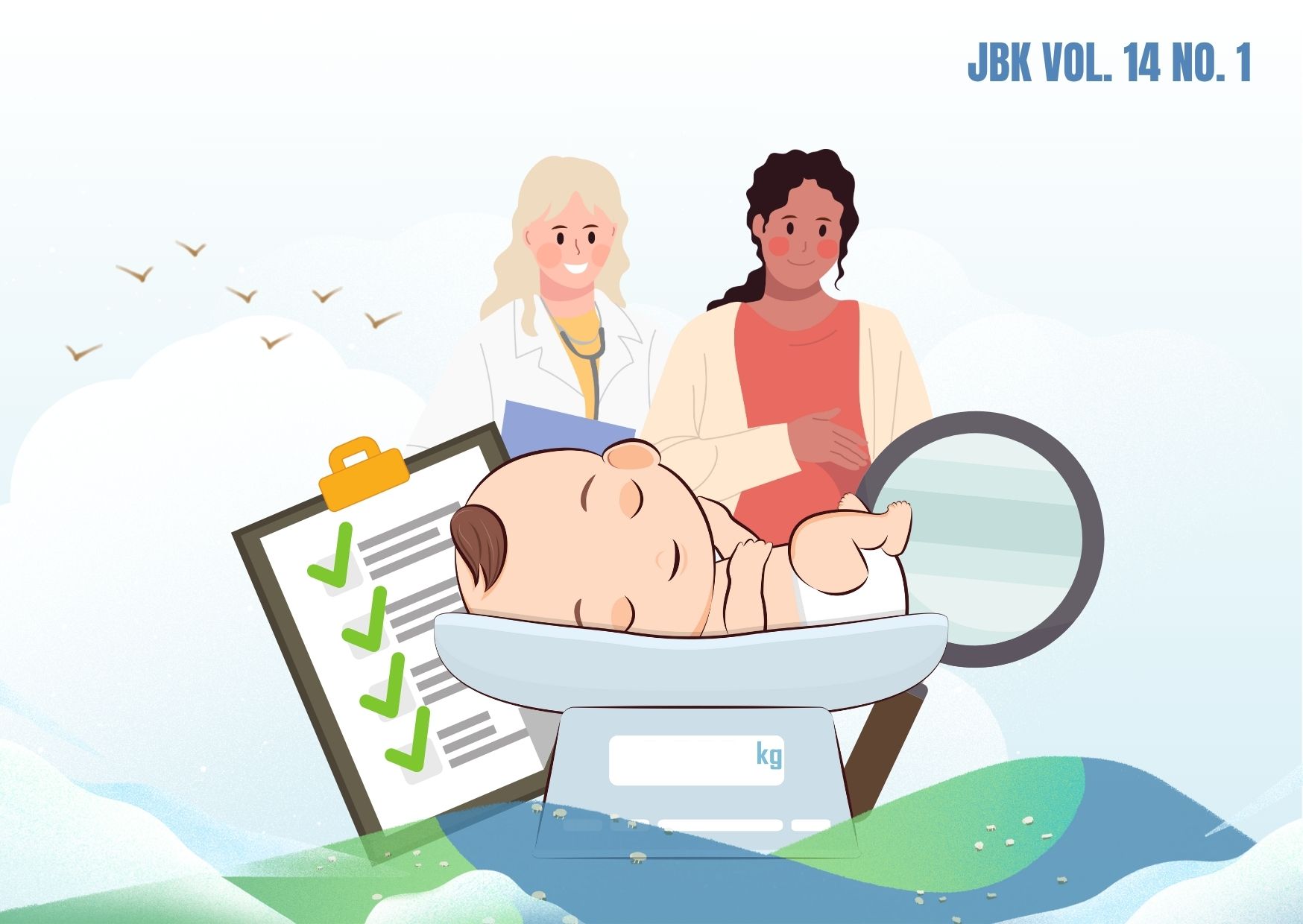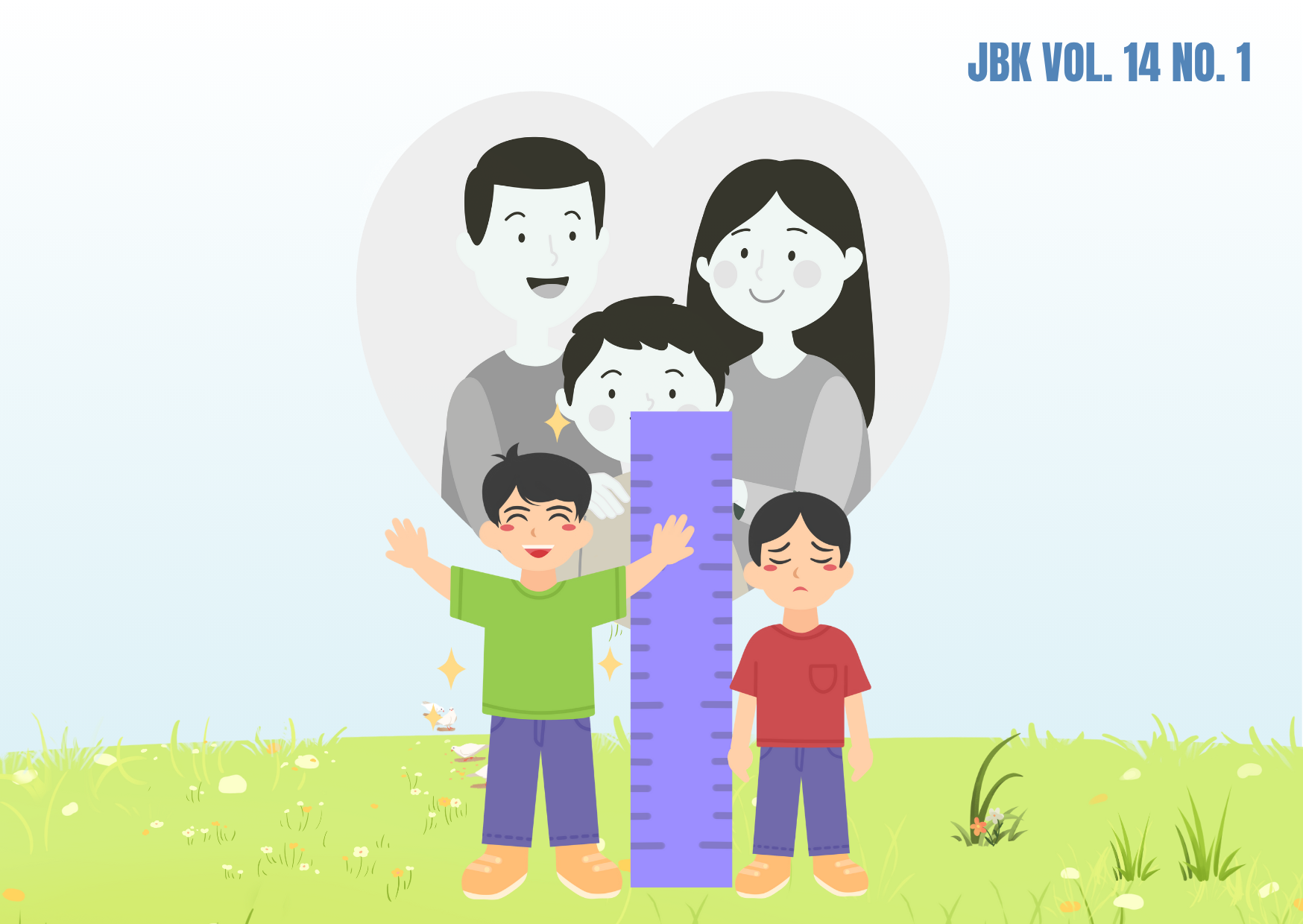SPATIAL AUTOCORRELATION ANALYSIS OF PULMONARY TUBERCULOSIS CASES IN CENTRAL JAVA PROVINCE
Tuberculosis is a disease that is easily transmitted and causes worry across the world. Central Java Province became one of the regions contributing the most tuberculosis cases in Indonesia in 2022, which amounted to 22,249 cases. This study aims to examine the local and global spatial autocorrelation of pulmonary tuberculosis cases in the Central Java Province in 2022. This research is an analytic observational research with an ecological study design. The unit of analysis used was 35 districts/cities. This study used secondary data from the Health Profile of Central Java Province in 2022. Data analysis used Moran's Index and Local Indicators of Spatial Associaton (LISA) methods with queen contiguity weighting in Geoda software. The results showed that Moran's index value of the global autocorrelation test on the number of pulmonary tuberculosis cases was 0.505. The results of the bivariate LISA test obtained the p value of tuberculosis cases with population, population density, and number of health facilities of 0.002, 0.449, and 0.007, respectively, with the Moran index value of 0.3111, 0.0075, and 0.2384 respectively. There are 9 spatially significant areas between population, population density, and number of health facilities with tuberculosis cases. This study concludes that there is a positive spatial autocorrelation (clustering pattern) of pulmonary tuberculosis cases in Central Java Province in 2022. In addition, there is positive spatial autocorrelation between population and number of health facilities with TB cases (clustering pattern) and there is no spatial autocorrelation between population density and TB cases.
Sutopo A, Arthati DF, Rahmi UA. Kajian Indikator Sustainable Development Goals (SDGs) [Internet]. 2014. Available from: https://media.neliti.com/media/publications/48852-ID-kajian-indikator-sustainable-development-goals.pdf
World Health Organization (WHO). Global tuberculosis report 2022 [Internet]. 2022. Available from: https://iris.who.int/bitstream/handle/10665/363752/9789240061729-eng.pdf?sequence=1
World Health Organization (WHO). Global Tuberculosis Report 2020 [Internet]. 2020. Available from: https://iris.who.int/bitstream/handle/10665/336069/9789240013131-eng.pdf?sequence=1
Faradis NA, Indarjo S. Implementasi Kebijakan Permenkes Nomor 67 Tahun 2016 tentang Penanggulangan Tuberkulosis. HIGEIA (Journal Public Heal Res Dev [Internet]. 2018;2(2):307–19. Available from: https://doi.org/10.15294/higeia.v2i2.21291
Dinas Kesehatan Provinsi Jawa Tengah. Profil Kesehatan Provinsi Jawa Tengah Tahun 2022 [Internet]. 2022. Available from: https://dinkesjatengprov.go.id/v2018/dokumen/Buku_Profil_Kesehatan_2022/mobile/index.html
Dhamayanti G, Yanti AR, Nurdani H, Suningsih R. Analisis Spasial Penyakit Tuberkulosis Paru di Kalimantan Tengah Tahun 2017. J Biostat Kependudukan, dan Inform Kesehat [Internet]. 2020;1(1):1–10. Available from: https://doi.org/10.51181/bikfokes.v1i1.4092%0A%0A
Tamiima L. Analisis Spasial dan Temporal Kasus Tuberkulosis di Kabupaten Sarolangun Tahun 2015-2021 [Internet]. Universitas Jambi; 2022. Available from: https://repository.unja.ac.id/43346/
Najmah. Epidemiologi Untuk mahasiswa kesehatan masyarakat [Internet]. Depok: PT RajaGrafindo Persada; 2015. Available from: https://repository.unsri.ac.id/99330/1/Najmah_Buku Epidemiologi untuk mahasiswa kesehatan masyarakaat.pdf
Prasetyo RB. Academia.edu. 2014. Panduan Operasional Analisis Data Spasial. Available from: https://www.academia.edu/10758035/Panduan_Operasional_Analisis_Data_Spasial
Wuryandari T, Hoyyi A, Kusumawardani DS, Rahmawati D. Identifikasi Autokorelasi Spasial pada Jumlah Pengangguran di Jawa Tengah Menggunakan Indeks Moran. Media Stat [Internet]. 2014;7(1):1–10. Available from: https://doi.org/10.14710/medstat.7.1.1-10
Saputro DRS, Widyaningsih P, Kurdi NA, Susanti A. Proporsionalitas Autokorelasi Spasial dengan Indeks Global (Indeks Moran) dan Indeks Lokal (Local Indicator of Spatial Association (LISA)). In: Prosiding Konferensi Nasional Penelitian Matematika dan Pembelajarannya [Internet]. 2018. p. 701–10. Available from: https://proceedings.ums.ac.id/index.php/knpmp/article/view/2079
Pratiwi LPS, Hendayanti NPN, Suniantara IKP. Perbandingan Pembobotan Seemingly Unrelated Regression – Spatial Durbin Model Untuk Faktor Kemiskinan Dan Pengangguran. J Varian [Internet]. 2020;3(2):51–64. Available from: ttps://doi.org/10.30812/varian.v3i2.596
Puteri FPP. Analisis Spasial Kasus Tuberkulosis di Kota Jambi Tahun 2015-2021 [Internet]. Universitats Jambi; 2022. Available from: https://repository.unja.ac.id/43251/
Romadhoni M. Pemeriksaan autokorelasi spasial penyebaran tuberkulosis paru di Jawa Timur dengan uji Indeks Moran [Internet]. Universitas Islam Negeri Maulana Malik Ibrahim; 2023. Available from: http://etheses.uin-malang.ac.id/52273/
Silva M de A e, Oliveira CDL, Neto RGT, Camargos PA. Spatial distribution of tuberculosis from 2002 to 2012 in a midsize city in Brazil. BMC Public Health [Internet]. 2016;16(912). Available from: https://doi.org/10.1186/s12889-016-3575-y
Pratiwi D. Epidemiologi Spasial Kasus Tuberkulosis (TB) Paru Anak Di Kota Medan Tahun 2016-2020 [Internet]. Universitas Islam Negeri Sumatera Utara; 2021. Available from: http://repository.uinsu.ac.id/12823/
Hastuti T, Ahmad LOAI, Ibrahim K. Analisis Spasial, Korelasi dan Tren Kasus TB Paru BTA Positif Menggunankan Web Sistem Informasi Geografis di Kota Kendari Tahun 2013-2015. J Ilm Mhs Kesehat Masy [Internet]. 2016;1(3). Available from: http://dx.doi.org/10.37887/jimkesmas.v1i3.1240
Siwiendrayanti A, Sukendra DM, Arofah D. Analisis Spasial dan Temporal Persebaran Kasus Baru TB Paru BTA (+) di Kabupaten Batang. J Kesehat Lingkung Indones [Internet]. 2018;17(2):95–103. Available from: https://doi.org/10.14710/jkli.17.2.95-103
Tabilantang DE, Nelwan JE, Kaunang WPJ. Analisis Spasial Distribusi Tuberkulosis Paru Basil Tahan Asam (Bta) Positif di Kota Manado Tahun 2015 – 2017. J Kesehat Masy Univ Sam Ratulangi [Internet]. 2018;7(4). Available from: https://ejournal.unsrat.ac.id/index.php/kesmas/article/view/23175
Hasibuan WN, Sembiring WSRG, Fakhrizal D. Pengaruh keberadaan fasilitas kesehatan terhadap penemuan kasus tuberkulosis di Kabupaten Tanah Bumbu tahun 2019. J Heal Epidemiol Commun Dis [Internet]. 2021;7(2):76–83. Available from: https://dx.doi.org/10.22435/jhecds.v7i2.5364
Juwita R, Fentia L, Masnarivan Y. Pemodelan Faktor Risiko Penyakit Tuberkulosis. J Endur Kaji Ilm Probl Kesehat [Internet]. 2021;6(1):170–9. Available from: https://doi.org/10.22216/jen.v6i1.177
Dewi RRK, Fazri E. Determinan Kejadian Tuberkulosis Paru Di Kalimantan Barat (Studi Data Riskesdas Tahun 2018). J Mhs dan Peneliti Kesehat [Internet]. 2022;9(2):69–79. Available from: http://dx.doi.org/10.29406/jjum.v9i2.4734
Heffernan C, Long R. Would program performance indicators and a nationally coordinated response accelerate the elimination of tuberculosis in Canada? Can J Public Heal [Internet]. 2019;110:31–5. Available from: https://doi.org/10.17269/s41997-018-0106-x
Ge E, Zhang X, Wang X, Wei X. Spatial and temporal analysis of tuberculosis in Zhejiang Province, China, 2009-2012. Infect Dis Poverty [Internet]. 2016;5(11). Available from: https://doi.org/10.1186/s40249-016-0104-2
Copyright (c) 2024 Jurnal Biometrika dan Kependudukan (Journal of Biometrics and Population)

This work is licensed under a Creative Commons Attribution-NonCommercial-ShareAlike 4.0 International License.
Copyright©2022 Jurnal Biometrika dan Kependudukan (Journal of Biometrics and Population)
This work is licensed under a Creative Commons Attribution-NonCommercial-ShareAlike 4.0 International License.
1. Copyright of all journal manuscripts is held by the Jurnal Biometrika dan Kependudukan.
2. Formal legal provisions to access digital articles of the electronic journals are subject to the provision of the Creative Commons Attribution-ShareAlike license (CC BY-NC-SA), which means that Jurnal Kesehatan Biometrika dan Kependudukan to keep, transfer media/format, manage in the form of databases, maintain, and publish articles.
3. Published manuscripts both printed and electronic are open access for educational, research, and library purposes. Additionally, the editorial board is not responsible for any violations of copyright law.



































